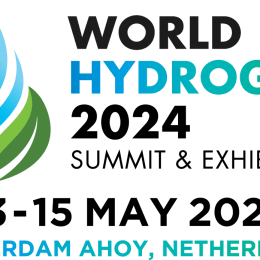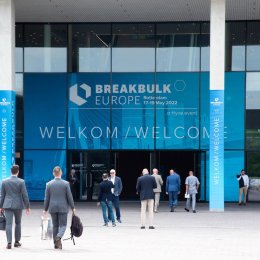Introducing SHM Next: Cutting-edge sensor systems for predictive maintenance of steel and concrete structures
 Credit: SHM Next's sensor system.
Credit: SHM Next's sensor system.
Can you give us a brief introduction to SHM Next?
We are a tech start-up that started in 2019; we develop various sensor systems for structural health monitoring and digital twinning of steel and concrete structures. Although we are a small team, we have a very broad scope of expertise – ranging from microelectronics to ultrasound, from computer science to structural engineering. These skills have enabled us to develop our unique hardware/software solutions.
How did you get started?
The research into integrity assessment algorithms for localisation of damage of structures originally started at TNO [the Dutch Organization for Applied Scientific Research]. While this was created with off-the-shelf components, we have developed the technology further – miniaturising the hardware and developing the electronics to ensure extended range of monitoring.
Can you tell us more about the software behind your sensors?
In the heart of our edge-computing sensor nodes, we have implemented our patented algorithm that precisely localises damage on a functional level. It is a quantitative measurement – meaning that it doesn’t only tell us where the damage is, but also the severity. This creates insight for asset owners so that they can adapt their maintenance schedule: thus enabling predictive maintenance.
If we understand correctly, your sensors measure damage activity, right?
Yes – let’s say we place a sensor on a structure, which can stay in position for weeks up to one year. It can listen to the damage that is occurring due to, for example, fatigue or corrosion. The sensor can filter out all the ‘background’ noise that does not contribute to the damage. Our sensors can do their own processing, but because they are connected to our cloud-based data management systems, where additional analysis can be performed on the monitoring data. There we can characterise the damage and say more about the prognosis.
Does corrosion sound different from fatigue?
These two processes sound very different. Fatigue produces extremely gentle but frequent signals, whereas corrosion as a slower process develops less frequent signals with very different characteristics.
How many sensors would a 100-metre long bridge require?
The coverage of every sensor node is expressed in square metres, and is typically about 100 m2. Hence the width of the bridge also plays a role in the instrumentation plan. Often instead of monitoring the whole bridge, critical areas are identified using analysis methods or historic inspection data. We usually install five to ten sensors on a bridge. Because they are so easy to install, asset managers can also move them to different sections for different time periods to minimize the cost.
Let’s talk about the digital twin.
The digital twin is the medium through which we communicate the monitoring insights to the asset owner. We have developed an immersive 4D VR environment which integrates all the monitoring data and analytics. Every time the sensors monitor growth of damage, this is updated in the digital twin. The asset owner can monitor the structural health of their asset without actually going there to inspect.
We have mentioned bridges. Was this your opening market?
Steel bridges have been the first place where we have applied our sensors. And this has been a great success; we are working with three different national road authorities: the Netherlands, Belgium and Denmark.
But your technology has far more potential than just bridges. What is your next step?
We are currently aiming to marinize our technology. We are looking at applications such as offshore wind turbines and their support structures. Ship hull monitoring may become another exciting application. Besides that, we are looking at corrosion monitoring for the process industry. Hydrogen embrittlement, for example, is a known issue in hydrogen transport and storage facilities that can be monitored using our technology.
What do you want to achieve by being part of the PortXL program?
One of the main objectives is continued marinization of our technology. Collaboration with PortXL partners on ship hull monitoring is ongoing. Application of our technology to movable bridges in urban environments is another focal point in the program and expected to be of societal impact.
The Rotterdam Maritime Capital of Europe region is heavily investing in maritime innovation. PortXL, located in Rotterdam, is the world’s first port accelerator and is unique in its kind, with a global network of leading companies and experts. Start-ups and scale-ups are guided during the development of their product and the growth of their company via an intensive programme.
Click here for more information on the development programs of PortXL.




